Text
Mirror neurons
Mirror neurons, a captivating aspect of neuroscience, are specialized cells with multifaceted functions that significantly influence our social interactions, learning processes, and empathetic responses. These neurons operate on a fascinating physiological basis, contributing to our ability to understand, imitate, and connect with others on a profound level.
At the core of their functionality, mirror neurons exhibit a unique mirroring mechanism, firing not only when we perform a specific action but also when we observe someone else carrying out the same action. This dual activation is pivotal for the process of imitation, enabling us to learn new skills by visually absorbing and replicating behaviors demonstrated by others. Through this mechanism, mirror neurons facilitate a rapid and efficient way for individuals to acquire new knowledge and abilities from their social environment.
Empathy, a fundamental component of human interaction, is another realm where mirror neurons play a crucial role. When we witness the emotions and experiences of others, mirror neurons fire, allowing us to share in their emotional states. This shared emotional experience forms the foundation of empathy, fostering a deeper understanding of the feelings and perspectives of those around us. Consequently, mirror neurons enhance our capacity for compassion and connection, strengthening social bonds and cooperation.
Moreover, mirror neurons contribute significantly to understanding the intentions of others. By simulating observed actions in our own neural circuits, these neurons help decipher the purpose behind behaviors, ultimately enhancing our ability to interpret and respond appropriately in social situations. This nuanced understanding of intentions fosters effective communication and collaboration within social groups.
Physiologically, the activation of mirror neurons occurs in the brain's motor areas, specifically the premotor cortex and the inferior parietal cortex. This neural activity creates a virtual simulation of the observed action, effectively imprinting the experience in our neural networks. This physiological mechanism not only aids in learning and imitation but also forms the neural basis for the development of complex behaviors and skills through observational learning.
In essence, mirror neurons stand as neural architects of social cognition, influencing our capacity for learning, empathy, and interpersonal understanding. By unraveling the intricacies of these remarkable cells, we gain profound insights into the neural underpinnings of human social behavior and the interconnected nature of our minds.

20 notes
·
View notes
Note
Wow thank you for the info. That was helpful
You’re welcome, I’m glad it helped 🤗
2 notes
·
View notes
Text
The crucial role of Ca and K in cardiac muscle and the amazing role of Ca/K pump play in our body 🫀
Calcium and potassium play crucial roles in cardiac muscle physiology. Calcium is involved in the initiation of muscle contraction. When an action potential travels down the cardiac muscle cell, it triggers the release of calcium ions from the sarcoplasmic reticulum. These ions bind to troponin, allowing the myosin and actin filaments to interact and contract the muscle.
On the other hand, potassium is crucial for muscle relaxation. After contraction, potassium ions move out of the cell, leading to repolarization. This repolarization is essential for the cardiac muscle to relax and prepare for the next contraction. The balance between calcium-induced contraction and potassium-induced relaxation is vital for the rhythmic beating of the heart.
Ca/K pump
The calcium-potassium pump, also known as the Ca²⁺/K⁺ pump is a vital component of cellular function, particularly in maintaining ion balance. In cardiac muscle cells, this pump helps regulate the levels of calcium and potassium.
The pump works by actively transporting calcium ions out of the cell and potassium ions into the cell against their respective concentration gradients. This process requires energy in the form of adenosine triphosphate (ATP). The calcium-potassium pump plays a crucial role in restoring the resting membrane potential after each cardiac muscle contraction, contributing to the overall electrical and mechanical activity of the heart.
23 notes
·
View notes
Note
Hey can you explain the effect of calcium and potassium on cardiac muscle
Hello, SURE!!! 🤗
4 notes
·
View notes
Text
The power of visualization for successful studying 👀
Creating mental images of success 📈
Visualizing yourself acing an exam or achieving your study goals can be a powerful motivator.
Visualizing the information 🧠
By creating mental images that align with the content, you are engaging both your visual and cognitive faculties, enhancing understanding and retention.
Techniques for effective visualization 🔆
a. Use color - assign colors to different concepts or ideas.
b. Create a story - transform abstract concepts into narratives or stories.
c. Engage all senses - while visualization is primarily visual, incorporating other senses can enhance the experience.
d. Utilize spatial memory - visualize information in specific locations within a familiar environment, such as your bedroom or a favorite park. By associating information with specific locations, you create mental cues that aid in recall.
The power of visualization extends beyond motivation and engagement.
64 notes
·
View notes
Text
🍄 Embarking on the Enigmatic Journey of Kingdom Fungi🍄
Greetings, curious minds! Today, let's unravel the intricacies of Kingdom Fungi, a fascinating realm teeming with diversity and significance. 🧫🌐
1. Morphological Marvels:
At the heart of fungal wonders lies an array of captivating structures. From the towering mushrooms in our forests to the microscopic threads known as hyphae, fungi showcase an unparalleled morphological diversity. Join me as we delve into the labyrinthine world of mycelium, sporangia, and spores, where each component plays a crucial role in their life cycle and ecological impact. 🕵️♂️🔬
2. Ecological Ballet:
Picture the dance of fungi in the grand theater of ecosystems. As decomposers, fungi break down organic matter, recycling nutrients and sustaining life cycles. But their role extends beyond, as mycorrhizal partnerships with plants reveal a harmonious interdependence. Together, let's explore how fungi shape the intricate tapestry of ecological balance and contribute to the health of our planet. 🌱🍂🔄
3. Pathogenic Prowess:
Venture into the shadows where fungi wield their pathogenic powers. Discover the intricacies of fungal infections in humans, plants, and animals. How do these formidable foes infiltrate our defenses, and what strategies do they employ to thrive in their chosen hosts? Uncover the mysteries of fungal pathogenicity and the ongoing battle between host and invader. 💉🦠
References:
1. Hawksworth, D. L. (2001). The magnitude of fungal diversity: The 1.5 million species estimate revisited. Mycological Research, 105(12), 1422-1432.
2. Blackwell, M. (2011). The fungi: 1, 2, 3... 5.1 million species? American Journal of Botany, 98(3), 426-438.
3. Tortorano, A. M., et al. (2014). European Confederation of Medical Mycology (ECMM) epidemiological survey on invasive infections due to Fusarium species in Europe. European Journal of Clinical Microbiology & Infectious Diseases, 33(1), 1623-1630.
Embrace the fungal odyssey! 🌐🔍

#science#biology#college#education#school#student#medicine#doctors#health#healthcare#wild fungi#fungi
10 notes
·
View notes
Text
Unraveling the Tapestry of Cellular Energy: A Comprehensive Voyage through the Electron Transport Chain 🧬⚙️
Prepare for a deep dive into the labyrinthine pathways of the Electron Transport Chain (ETC), where molecular machinations weave the intricate tapestry of cellular respiration. In this odyssey, we'll navigate the complexities with surgical precision, leaving no nuance unexplored.
1. Prelude at Complex I (NADH Dehydrogenase):
The ETC's overture commences at Complex I, where NADH, a product of glycolysis and the Krebs cycle, surrenders its high-energy electrons. Traverse the serpentine route of flavin mononucleotide (FMN) and a succession of iron-sulfur clusters, witnessing the orchestrated dance that propels electrons toward the enigmatic ubiquinone (Q).
2. Interlude with Succinate (Complex II - Succinate Dehydrogenase):
As the symphony progresses, Complex II takes the stage with succinate as its protagonist. Succinate dehydrogenase, fueled by succinate from the Krebs cycle, orchestrates a parallel electron flow. Behold the ballet of electrons navigating iron-sulfur clusters and flavin adenine dinucleotide (FAD), converging upon ubiquinone (Q) in a seamless choreography.
3. Cytochrome Waltz (Complex III - Cytochrome bc1 Complex):
The narrative crescendos at Complex III, the cytochrome bc1 complex, where Q takes center stage. Through a series of mesmerizing redox reactions, Q gracefully shuttles electrons to cytochrome c. This transient dancer becomes the ethereal messenger, ferrying electrons with finesse towards the climactic rendezvous at Complex IV.
4. Grand Finale with Complex IV (Cytochrome c Oxidase):
In the climactic finale, Complex IV, personified by cytochrome c oxidase, awaits the electron ensemble. Watch as electrons, guided by a cascade of copper and iron centers, engage in a captivating pas de deux with molecular oxygen. Witness the alchemical metamorphosis as oxygen is humbly transmuted into water, marking the zenith of our electron saga.
5. Proton Symphony and ATP Synthesis:
Simultaneously, the proton symphony unfolds as protons, displaced during electron transit, accumulate in the intermembrane space. This sets the stage for a grand energy transfer. The finale crescendos with protons flowing back through ATP synthase, a molecular turbine, culminating in the synthesis of ATP—the lifeblood of cellular energy currency.

References:
1. Alberts, B., Johnson, A., Lewis, J., Raff, M., Roberts, K., & Walter, P. (2014). Molecular Biology of the Cell (6th ed.). Garland Science.
2. Nelson, D. L., Cox, M. M. (2017). Lehninger Principles of Biochemistry (7th ed.). W.H. Freeman and Company.
3. Berg, J. M., Tymoczko, J. L., Gatto, G. J. S., & Stryer, L. (2019). Biochemistry (8th ed.). W.H. Freeman and Company.
#science#biology#college#education#school#student#medicine#doctors#health#healthcare#molecules#chemistry#molecular biology
53 notes
·
View notes
Text
Decoding the Pharmacological Symphony of Turkey Tail Mushroom: An In-Depth Analysis of its Chemical Composition, Immunomodulatory Mechanisms, and Implications in Cancer Therapeutics 🍄🔬
Salutations, esteemed Tumblr intellectuals! Brace yourselves for a cerebral sojourn into the pharmacological labyrinth of Turkey Tail Mushroom, an exploration that transcends the ordinary and delves into the intricate interplay of its chemical constituents, the sophisticated mechanisms of immunomodulation, and the far-reaching implications of its therapeutic potential in the intricate landscape of cancer biology. Prepare your minds for an expedition into the realms of molecular complexity, immune orchestration, and therapeutic promise. Grab your favorite scientific journal, a pen, and perhaps a lab coat, for this journey is not for the faint of intellectual heart. ☕📚
Chemical Symphony: An Elaborate Choreography of Bioactive Compounds:
In the molecular ballet of Turkey Tail, bioactive compounds are the principal dancers, each executing a meticulously choreographed routine. Polysaccharopeptides (PSPs), intricate glycoproteins with immunomodulatory acumen, command attention. Through the fine-tuned modulation of immune responses, these compounds stimulate various facets of the immune system, orchestrating an elaborate dance that amplifies the body's ability to recognize and eliminate neoplastic cells. Concurrently, beta-glucans, linear glucose polymers, contribute to this biochemical ballet by fine-tuning immune cell responses, enhancing the overall antitumor immune surveillance.
Navigating the Anti-Tumor Terrain: A Molecular Expedition:
Our scientific cartography navigates the expansive anti-tumor terrain mapped out by Turkey Tail's polysaccharides. The inhibitory effects on tumor growth and metastasis are akin to molecular fortifications against cancer progression. Through intricate mechanisms involving the activation of natural killer cells, cytotoxic T cells, and macrophages, Turkey Tail emerges as a sentinel, curbing the unchecked proliferation of malignant cells. Additionally, its antioxidative prowess, rooted in compounds like ergosterol peroxide, further shields cellular structures from oxidative stress, a nexus in carcinogenesis.
Immersive References: Nourishment for the Inquisitive Intellect:
1. Stamets, P. (2012). "Turkey Tail: Old Medicine, New Hope." Integrative Medicine: A Clinician's Journal, 11(1), 54–59.
- Stamets' exposé weaves a tapestry connecting ancient medicinal wisdom with contemporary insights, shedding light on Turkey Tail's multifaceted potential.
2. Wasser, S. P. (2011). "Current findings, future trends, and unsolved problems in studies of medicinal mushrooms." Applied Microbiology and Biotechnology, 89(5), 1323–1332.
- Wasser's comprehensive review acts as a meta-analysis, synthesizing the current knowledge landscape of medicinal mushrooms, positioning Turkey Tail within the broader discourse.
3. Sun, J. E., Ao, Z. H., Lu, Z. M., Xu, H. Y., Zhang, X. M., & Dou, W. F. (2002). "Antihyperglycemic and antilipidperoxidative effects of dry matter of culture broth of Inonotus obliquus in submerged culture on normal and alloxan-diabetes mice." Journal of Ethnopharmacology, 95(2-3), 285–292.
- In the realm of metabolic interactions, this study offers a glimpse into the potential implications of Turkey Tail compounds in managing hyperglycemia and lipid peroxidation.
4. Kidd, P. M. (2000). "The use of mushroom glucans and proteoglycans in cancer treatment." Alternative Medicine Review, 5(1), 4–27.
- Kidd's magnum opus serves as a compendium, dissecting the applications of mushroom-derived compounds in cancer therapeutics, providing a nuanced understanding.
Empowering the Community: A Call for Translational Excellence:
Knowledge is a potent elixir, yet its administration demands finesse. As we unlock the mysteries of Turkey Tail Mushroom, let us champion translational excellence, bridging the realms of bench and bedside. Always, without exception, seek the counsel of healthcare professionals, for personalized insights into the delicate interplay of molecular intricacies. Our collective journey extends beyond unraveling the pharmacological nuances; it's a clarion call to empower our community with the technical acumen to navigate the dynamic expanse of cancer research. 🌐💚
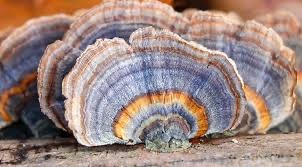
Your musings on this intricately detailed exploration are most welcome!
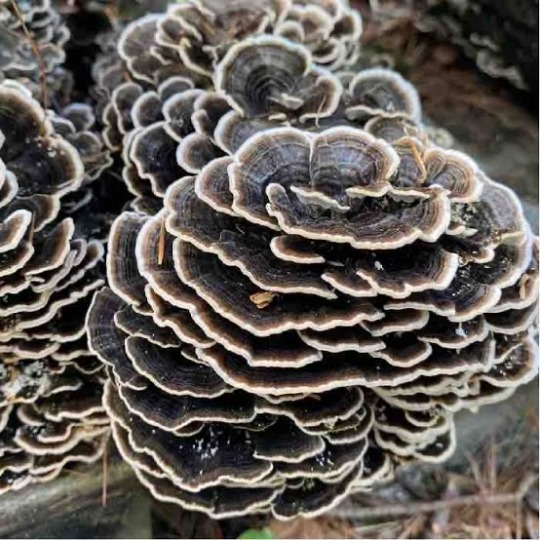
#science#biology#college#education#school#student#medicine#doctors#health#healthcare#mushrooms#turkey tail#chemistry#cancer#cancer treatment
24 notes
·
View notes
Text
Embarking on a Scholarly Expedition: Unraveling the Electric Tapestry of the Heart's Symphony ⚡️💓
Greetings, inquisitive minds! Today, I invite you to join me on a deep dive into the intricacies of the heart's electric system – a symphony conducted by an ensemble of specialized cells, choreographing the rhythm of life itself. 📚🔬
1. The Sinoatrial (SA) Node: The Maestro of the Orchestra
Our exploration commences with the illustrious SA node, a cluster of cells nestled elegantly in the right atrium. As the heartbeat's maestro, the SA node plays a pivotal role in initiating the electric impulse. Picture this natural pacemaker as the conductor, setting the tempo for the graceful dance of atrial contraction.
2. Atrioventricular (AV) Node and the Bundle of His: The Harmonious Transition
Moving seamlessly through our cardiac composition, we encounter the AV node – a bridge connecting the atria to the ventricles. This crucial junction ensures a harmonious transition, much like the bridge between movements in a musical masterpiece. Following this, the electric wave traverses the Bundle of His, a specialized pathway conducting the impulse with precision.
3. Ventricular Contraction: The Grand Crescendo
In the grand finale, our symphony reaches its pinnacle as the ventricles contract in orchestrated unison. This powerful crescendo propels blood throughout the circulatory system, marking the culmination of the heart's electric ballet.
As aspiring scholars, let's delve into these references, unraveling the secrets of this physiological masterpiece. Envision the heart's electric symphony, appreciate the precision required for this grand performance, and together, let's celebrate the wonders of medical science! 💡🧠🎓

#science#biology#college#education#school#student#medicine#doctors#health#healthcare#electrophysiology#physiology#nursing
18 notes
·
View notes
Text
Neurophysiological Symphony: Decoding the Intricacies of Neuronal Action Potentials 🧠⚡️
Salutations, Tumblr scholars! 🎓 Prepare for a cerebral voyage as we delve into the profound intricacies of neuronal communication, spotlighting the ethereal ballet of action potentials! 🌌💫
Introduction:
Neurons, the virtuosos of our nervous system, engage in a sophisticated dialogue facilitated by the nuanced choreography of action potentials. Let us dissect this neurophysiological marvel with precision and finesse. 📚✨
1. The Prelude - Axon Hillock Overture:
Initiation unfolds at the axon hillock, a nexus of decision-making. Voltage-gated sodium channels undergo conformational changes, inducing an influx of sodium ions, thus instigating the critical decision to fire—an orchestration known as the initiation phase. ⚙️⚠️
2. Act I - Depolarization Crescendo:
The ensuing depolarization phase witnesses a surge in membrane voltage, orchestrated by the influx of positively charged sodium ions. This dynamic spectacle disrupts the membrane's resting potential, marking the commencement of the neuronal conversation with unparalleled fervor. 📈🎻
3. Act II - Repolarization Sonata:
Voltage-gated potassium channels, in a harmonious interlude, activate, allowing potassium efflux. Repolarization unfolds gracefully, reinstating the neuron's electrical equilibrium. The meticulous choreography readies the neuron for subsequent engagements. 🚪💨🔄
4. Act III - Hyperpolarization Cadence:
A brief hyperpolarization, an encore of sorts, ensues as potassium efflux persists, momentarily exaggerating the negative membrane potential. This nuanced cadence serves as a poetic pause before the neural narrative resumes. ⬇️🎭
5. Epilogue - Sodium-Potassium Pump Ballet:
In the epilogue, the sodium-potassium pumps elegantly perform their backstage ballet. Sodium is actively extruded, while potassium is ushered back onto the stage, meticulously restoring the resting membrane potential. A harmonious reset concludes this neurophysiological masterpiece. 🔄🔧
Embark on this odyssey through the synaptical intricacies! 🚀🔬
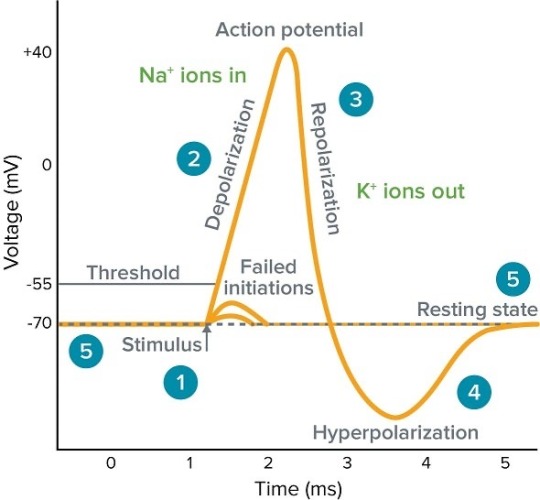
References:
1. Kandel, E. R., Schwartz, J. H., & Jessell, T. M. (2013). Principles of Neural Science.
2. Purves, D., Augustine, G. J., Fitzpatrick, D., et al. (2018). Neuroscience.
3. Bear, M. F., Connors, B. W., & Paradiso, M. A. (2016). Neuroscience: Exploring the Brain.
#science#biology#college#education#school#student#medicine#doctors#health#healthcare#neurobiology#neurology#neurophysiology
46 notes
·
View notes
Text
🧪The sodium-potassium pump🧬
Greetings, Tumblr community! 🧠💡 Let's engage in a comprehensive exploration of the sodium-potassium pump, dissecting its molecular intricacies and elucidating its critical role in cellular homeostasis.
Introduction:
The sodium-potassium pump, residing within the cellular membrane, is an adenosine triphosphate (ATP)-dependent transmembrane protein pivotal for maintaining ionic balance. Its primary function is to actively transport three sodium ions out of the cell while concurrently importing two potassium ions.
Functional Mechanism:
In terms of mechanistic precision, the sodium-potassium pump operates as an ATPase enzyme, utilizing the energy derived from ATP hydrolysis. This primary active transport process involves sequential conformational changes within the pump's structure.
The process commences with the binding of intracellular sodium ions to high-affinity sites on the pump. Subsequent phosphorylation, facilitated by ATP, induces conformational alterations that render the pump receptive to extracellular potassium ions. This triggers dephosphorylation, allowing potassium ions to be released intracellularly.
This orchestrated ion exchange serves to uphold the electrochemical gradient across the cellular membrane, establishing and preserving the resting membrane potential. In essence, the sodium-potassium pump is the architect of the delicate balance between sodium and potassium concentrations.
Physiological Significance:
The physiological ramifications of this meticulous ion transport extend to neuronal excitability and osmoregulation. By contributing to the establishment of the resting membrane potential, the pump plays a pivotal role in regulating action potentials and facilitating the propagation of nerve impulses.
Additionally, the pump actively participates in cellular volume control through osmoregulation. Its influence on water movement prevents cellular swelling or shrinkage, underscoring its significance in maintaining cellular integrity.
For those seeking empirical validation, consider consulting the following authoritative sources:
1. **Alberts B, Johnson A, Lewis J, et al.** Molecular Biology of the Cell. 4th edition. New York: Garland Science; 2002. Section 11.3, The Plasma Membrane.
2. **Nelson DL, Cox MM.** Lehninger Principles of Biochemistry. 7th edition. New York: W.H. Freeman; 2017. Chapter 11, Active Transport and the Cytoskeleton.
3. **Lodish H, Berk A, Zipursky SL, et al.** Molecular Cell Biology. 4th edition. New York: W. H. Freeman; 2000. Section 15.1, The Transport of Small Molecules Across Membranes.
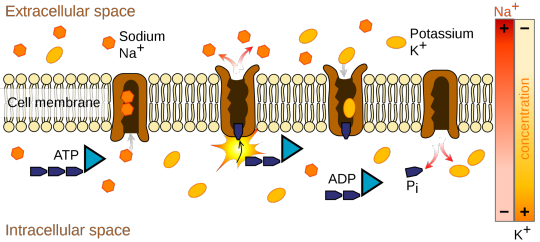
Immerse yourself in the scientific intricacies of cellular dynamics with these foundational resources! 📚✨
#science#biology#college#education#school#student#medicine#doctors#health#healthcare#nursing#nurses#nurselife#human physiology#physiology
137 notes
·
View notes
Text
🫀Let's look into atrial depolarization (P wave), ventricle depolarization (QRS wave), and ventricular repolarization (T wave)
🔵 Atrial Depolarization - The P Wave 💙 At the heart's command, the P wave sets the stage, representing the initial electrical impulse that triggers the contraction of the atria. It's the starting point, a signal that initiates the beat, much like the ignition of a well-tuned engine.
⚡ Ventricle Depolarization - The QRS Wave ⚡ Moving deeper into the heart's rhythm, we encounter the QRS complex. This trio of waves illustrates the ventricles' forceful electrical activation, pushing blood out to our entire body. Think of it as the powerful engine revving up, propelling us forward with every heartbeat.
🌀 Ventricular Repolarization - The T Wave 🌀 As the heart cycle nears its end, the T wave emerges, symbolizing the ventricles' recovery and preparation for the next cycle. It's like the engine cooling down after a hard run, regaining composure before the next surge of activity.
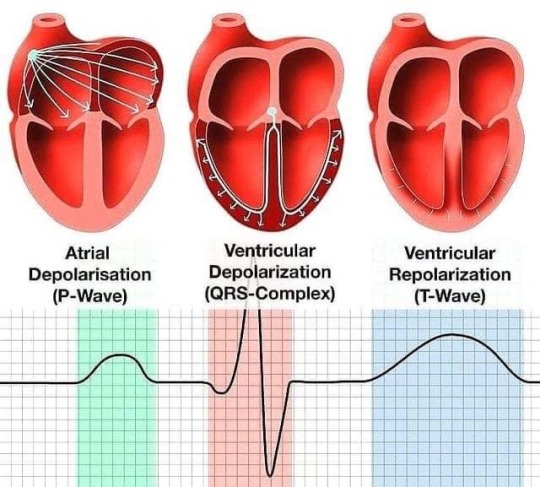
109 notes
·
View notes
Text
"Delving Deeper into Glutathione: The Biochemistry Behind its Protective Powers"
Hello, Tumblr community! 🌿 Today, let's embark on an intellectual journey into the intricate world of Glutathione, a molecular marvel with profound implications for your body's defense mechanisms and overall vitality. 🧬
The Biochemical Symphony of Glutathione:
Glutathione, abbreviated as GSH, is a low-molecular-weight tripeptide comprised of three amino acids – cysteine, glutamic acid, and glycine. Its presence is pervasive, with significant concentrations found within virtually every cell of your body. At its core, GSH serves as a central hub for a variety of biochemical reactions, many of which are critical for maintaining cellular health.
🛡️ Shielding Against Oxidative Stress:
At the heart of Glutathione's prowess lies its ability to act as an antioxidant. To understand this, we must venture into the realms of free radicals highly reactive molecules that can wreak havoc on your cellular structures. GSH swoops in like a molecular guardian, neutralizing these renegade radicals and preventing cellular damage.
🔄 Recycling Antioxidants:
GSH doesn't stop at just neutralizing free radicals. It has a unique capacity to regenerate other antioxidants, such as vitamin C and vitamin E, which are also instrumental in combating oxidative stress. This recycling process amplifies the body's antioxidant defenses, making it a true linchpin of cellular protection.
💪 The Multifaceted Benefits of Glutathione:
1. Immune Resilience: By fortifying the immune system, Glutathione empowers your body to defend against pathogens and infections more effectively.
2. Detoxification Dynamo: As a vital component in phase II detoxification, GSH aids in the removal of harmful substances, thereby bolstering liver health and overall detox processes.
3. Anti-Aging Elixir: The anti-aging properties of Glutathione are tied to its ability to quell oxidative stress and cellular damage, potentially slowing down the aging process.
4. Skin Health: Some individuals explore Glutathione for its role in skin lightening and brightening, although its effects can vary among individuals.
📚 Diving into the Research:
1. "The Role of Glutathione in Cellular Response to Chemotherapeutic Agents"
- A scholarly article by Maria Serpina and John D. Hayes, featured in the Journal of Biological Chemistry.
2. “Glutathione as a Biomarker in Oxidative Stress: An Overview"
- An in-depth review by Farzaneh Rahmani and Hossein Aslani, published in the Journal of Medical Biochemistry.
3. "Mechanisms of Glutathione-Dependent Protection Against Oxidative Stress and Nitric Oxide-Induced Neurotoxicity in a Neuronal Cell Line"
While Glutathione supplements are gaining popularity, it's imperative to seek counsel from a healthcare professional before incorporating them into your regimen. Your individual health and physiology can influence the efficacy and safety of supplementation.
Stay curious, stay informed! 📖✨
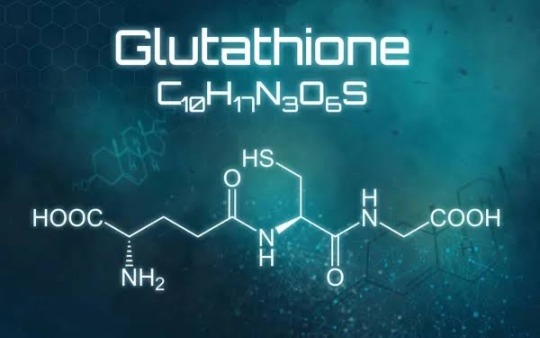
#science#biology#college#education#school#student#medicine#doctors#health#healthcare#chemistry#bioenergy#biochemistry#science nerds#study aesthetic#public health#physical health
44 notes
·
View notes
Photo
😍

Stained muscle tissue captured at 200x under the ZEISS Axioscope 5 microscope.
24 notes
·
View notes
Text
The Power of Immunotherapy: A Deep Dive into Cancer Treatment
Immunotherapy, a groundbreaking approach in cancer treatment, has been making waves in the medical world. 🌟 But what exactly is it, and how does it work? Let's delve into the intricacies of this cutting-edge therapy. 💉
Immunotherapy at a Glance: 🔬 Immunotherapy, or immuno-oncology, is a therapeutic strategy that harnesses the body's immune system to combat cancer cells. Unlike traditional treatments like chemotherapy, which target both healthy and cancerous cells, immunotherapy is highly targeted, making it a game-changer in the fight against cancer.
Key Players in Immunotherapy: 🦠
Tumor Antigens are molecules found on cancer cells that act as red flags, signaling the immune system to attack. 👥
T Cells: The immune system's soldiers. They are trained to recognize and destroy threats, including cancer cells.
💡 Checkpoint Inhibitors: Proteins that, when blocked, enhance the immune response against cancer. 🧬
CAR-T Cell Therapy: Genetic engineering to supercharge T cells for precision attacks on tumors.
How Does Immunotherapy Work? Immunotherapy comes in various forms, but they all aim to accomplish one goal: boost the immune system's ability to recognize and eradicate cancer cells. Whether through checkpoint inhibitors, vaccines, or CAR-T cell therapy, the goal remains: empower the immune system's fighters!
Immunotherapy is a testament to the power of science and innovation, offering new hope to cancer patients worldwide. 🌍
Let's continue to explore, research, and advance this remarkable field to improve the lives of those affected by cancer.
References:
Postow, M. A., Callahan, M. K., & Wolchok, J. D. (2015). Immune Checkpoint Blockade in Cancer Therapy. Journal of Clinical Oncology, 33(17), 1974–1982. doi:10.1200/jco.2014.59.4358
Rosenberg, S. A., Yang, J. C., & Restifo, N. P. (2004). Cancer immunotherapy: moving beyond current vaccines. Nature Medicine, 10(9), 909–915. doi:10.1038/nm1100
June, C. H., & Sadelain, M. (2018). Chimeric Antigen Receptor Therapy. New England Journal of Medicine, 379(1), 64–73. doi:10.1056/nejmra1706164
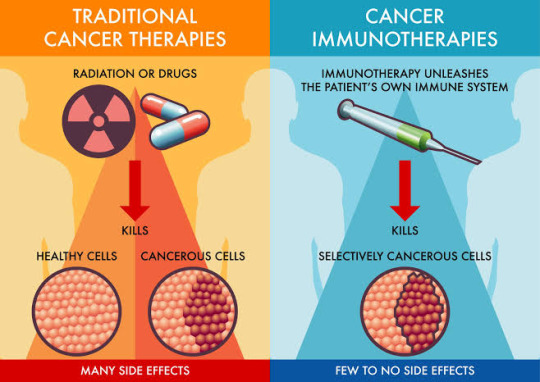
#immunotherapy#science#biology#college#education#school#student#medicine#doctors#health#healthcare#immune system#cancer#disease#immune health#immune response
58 notes
·
View notes
Text
🔬🌿 Diving Deeper into the Intricacies of Bioenergetics 🌿🔬
Hey there, science enthusiasts and curious minds! Today, we're embarking on a journey into the fascinating realm of bioenergetics, where the magic of energy transformation in living organisms unfolds. Buckle up because we're about to delve into the nitty-gritty of this captivating field!
The Energy Currency: ATP
At the heart of bioenergetics lies adenosine triphosphate (ATP), often dubbed the "energy currency" of cells. It's like the dollars in your wallet, except cells use ATP to facilitate all sorts of biochemical processes. Think of it as the universal energy medium that powers life itself.
The Energy Factory: Cellular Respiration
Now, let's talk about how ATP is made. In eukaryotic organisms like us, cellular respiration is the superstar process. It comprises glycolysis, the citric acid cycle (Krebs cycle), and oxidative phosphorylation. During these metabolic pathways, energy is extracted from organic molecules, such as glucose, and transformed into ATP. It's like a power plant for the cell, with each step meticulously orchestrated.
Expenditure and ATP Hydrolysis
But cells aren't just about making energy; they're also extravagant spenders. When cells perform work or carry out essential functions, they hydrolyze ATP into adenosine diphosphate (ADP) and inorganic phosphate (Pi). This process releases energy that fuels various cellular activities, from muscle contractions to active transport across cell membranes. It's like using cash to pay for services, and ATP is the bank where cells withdraw their energy.
Thermodynamics and Bioenergetics
Now, let's get a bit nerdy with thermodynamics. Bioenergetics pays homage to the laws of thermodynamics, particularly focusing on entropy and enthalpy. These principles help explain how energy flows within biological systems and how it's harnessed and regulated to keep life ticking. It's a bit like maintaining a delicate energy balance, ensuring that the cellular economy remains stable.
References to Dive Deeper
If you're eager to explore bioenergetics further, here are some fantastic references to get your intellectual gears turning:
1. "Molecular Cell Biology" by Lodish et al.
2. "Molecular Biology of the Cell" by Alberts et al.
3. "Bioenergetics 4" by Nicholls and Ferguson.
So, there you have it! Bioenergetics is like the electrifying symphony of life, with ATP as the conductor. The next time you marvel at the complexity of living organisms, remember that it's all powered by the awe-inspiring world of bioenergetics! 🌿🔬✨ #

#science#biology#college#education#school#student#medicine#doctors#health#healthcare#bioenergy#biochemistry#knowlegde#molecular biology
39 notes
·
View notes
